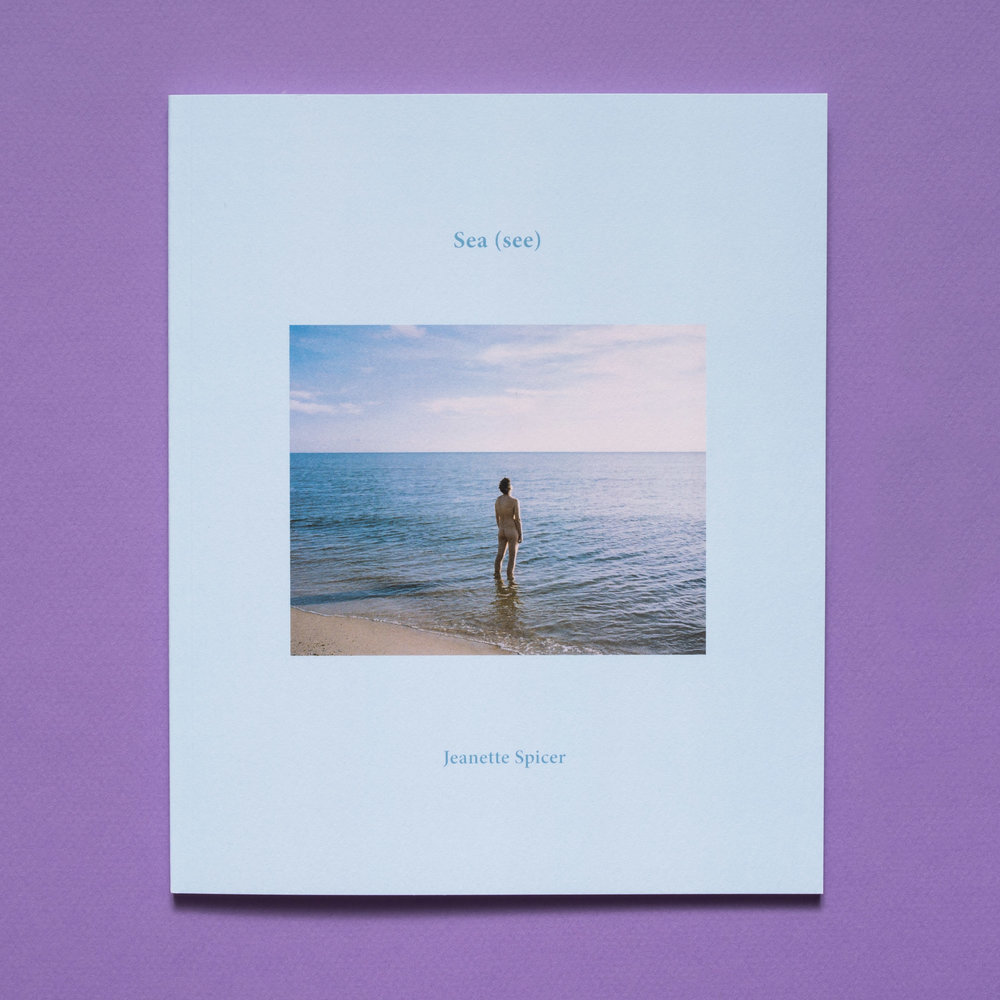Jeanette Spicer (b. 1988) is a photographer from Baltimore, MD, currently based in Brooklyn, NY. Besides her personal projects using photography and video, she teaches photography at The International Center of Photography, School of Visual Arts and Pratt Institute. Her series Sea(see) is a documentation of her relationship at the time, reflecting on the queer female gaze upon queer female body.
Can you give us some background information about how you got to photography?
When I was eight, I was very involved in sports, and started photographing my friends after games back at my house. I would dress them in various articles of clothing and typically place them into the landscape. For me, photography has always been a way to see someone you are close to, and know in a very specific way, differently.
Introduce us to your series Sea(see)
Sea(see) is a documentation of a relationship, and my partner at the time, over the course of a year. This was a very specific time in my life as I had just finished graduate school, and just began a relationship with a woman, for the first time. The series has several components that come from my desire to collaborate while also questioning the body as it relates to space, and how my gaze as a queer woman looks photographically. The images were made as a reclaiming of the body, intimacy, and the gaze as it is situated between queer women. I don’t often see a lot of photographic bodies of work that show queer women looking at each other, whether intimately or otherwise and this body of work gives voice to my community, who are marginalized and often silenced.
Where does your title Sea(see) come from?
Sea(see) is a derivative of a homonym which was inspired by my simultaneous feelings at the time in which I made this work, of being both comforted by my partner at the time, and also confused and deeply conflicted about my own sexuality. The title being a homonym is representative of something sounding exactly the same, while meaning something different. Specifically, Sea(see) for two reasons: The sea is a place where some of my favorite photographs from the series were made, and it is also a peaceful, mysterious power to me. “See” meaning to see something, see through something, see something for what it is, but also not being sure you see the thing itself.
“The images were made as a reclaiming of the body, intimacy, and the gaze as it is situated between queer women”.
The idea is for my confusion, clarity, and fear to be wrapped up subtly in a title while nodding to an environment that plays a big role in my life, and how I see the world the series.
You just published the book on Kris Graves Projects. How did you work with this medium, was it obvious and intuitive to convey this intimacy feeling through a book?
When I started this project, I did not initially see it in book form, and didn’t shoot for it to be seen as such. It was only a year later after the work was done that I realized that this body of work would work well in book form and to really wrap up the relationship that had existed, and the project itself, in a finalized form that could be physical. I fell in love with photography through the darkroom and seeing the magic of an image appearing on a sheet of paper, and the physicality that the darkroom requires; the making of an object. I missed making objects, and the book filled that need. The work can also function as a narrative which I started to realize as I saw it come to fruition in book form. I am interested in how projects can morph into other entities and take on new lives depending upon how images are arranged, shown, and seen.
Jeanette Spicer’s website.
Open your eyes…

















